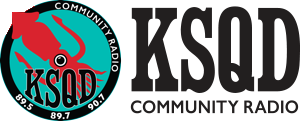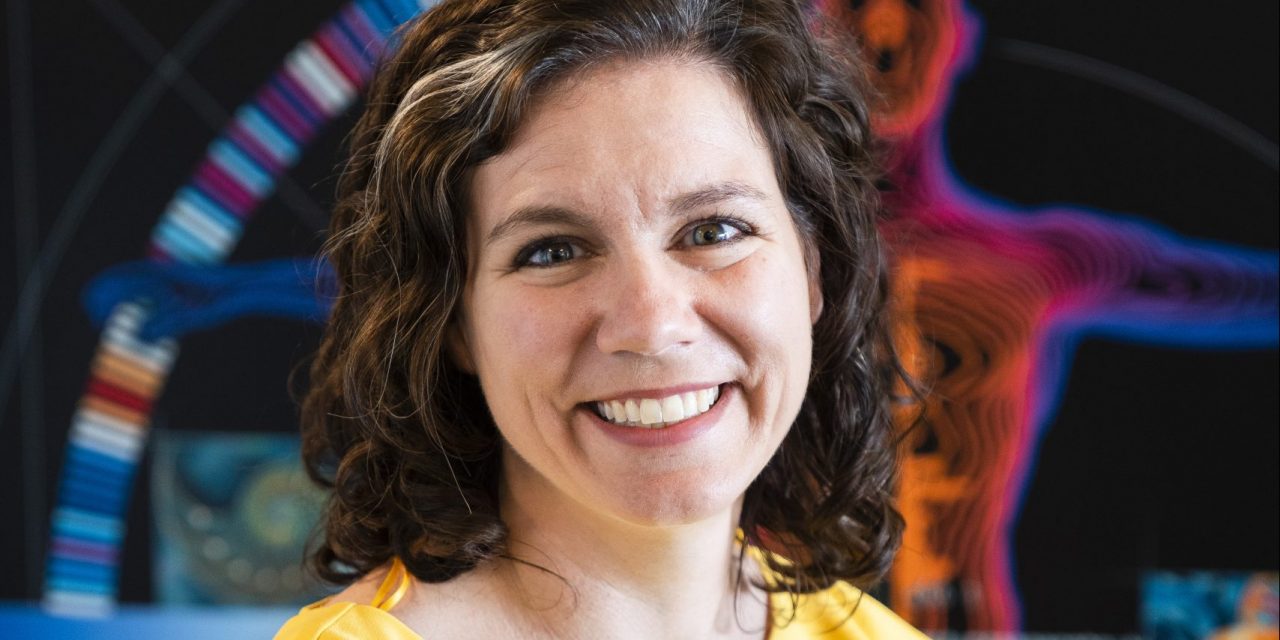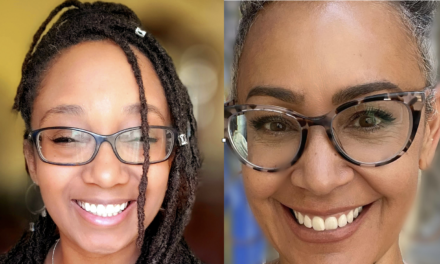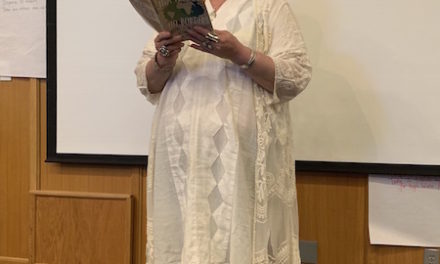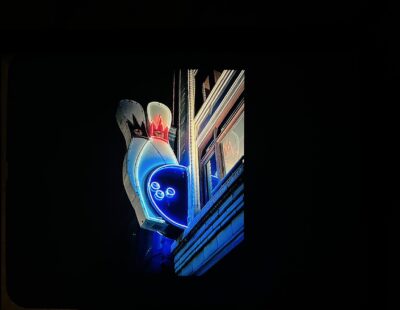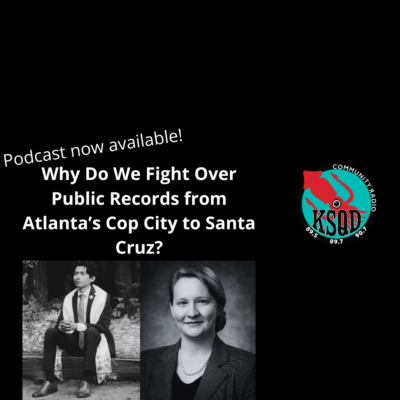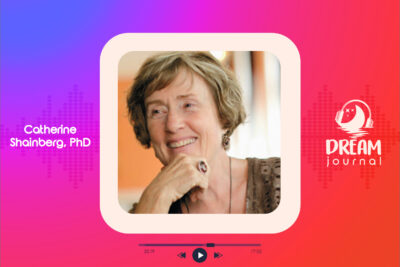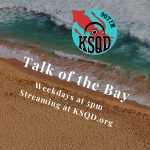
Host: For years, scientists have sought after the blueprints for human life—the entirety of our DNA—called a genome. Knowing how it’s arranged would help researchers and doctors understand diseases. Scientists mostly succeeded in 2003 when the Human Genome Project sequenced nearly all of a human’s DNA. But a sizeable chunk still remained a mystery. The technology available at the time couldn’t determine the structure of more complex DNA regions. Now, almost two decades later, a collaborative endeavor co-led by UC Santa Cruz’s Karen Miga finished sequencing an entire human genome. Because of this work, Time Magazine has named her one of the 100 most influential people of 2022.
Here’s KSQD science reporting intern McKenzie Prillaman with the story.
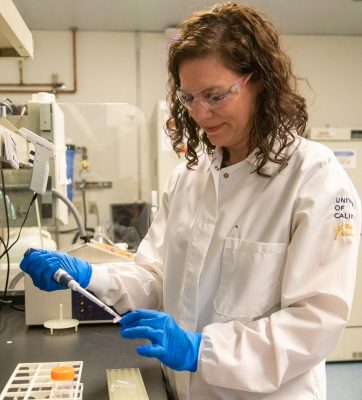
Photo by Carolyn Lagattuta/UCSC Genomics Institute
Miga: “When we think about something like a genome, we think about it as kind of a book of life.”
Karen Miga is a biomolecular engineer at UC Santa Cruz. She researches the stuff that makes up a genome; DNA—the long strings of chemicals that contain the instructions to create and maintain human life.
She also co-leads a research consortium of about 100 scientists from around the world with one goal: to fill in the unknown gaps in the human genome. And on March 31st, the team announced it reached its goal—the consortium sequenced a complete human genome.
Miga: “I think what we’re seeing now is just a little bit of foreshadowing of what our future is going to be once we can see our genome completely.”
This groundbreaking announcement quickly spread around the globe. Researchers and doctors have been waiting for this milestone—knowing the entire code for human life will help them understand how diseases start, and how to prevent and treat them.
Miga: “It’s our hope that this could identify new information that could guide rare disease or diseases we really don’t understand quite yet at the genetic and genomic level. But once we have a more complete map, and then maybe that will become more clear.”
This insight could lead to a new era of personalized medicine. The breakthrough builds on research conducted as part of the Human Genome Project in the 90s and early 2000s. Back then, scientists, including those at UCSC, competed to be the first to determine all of a human’s DNA.
The project ended in 2003 with an essentially complete genome. But about 8% remained unknown because the technology couldn’t parse out complicated DNA regions.
Then, in 2018, came a discovery by Miga and her colleagues that led to a new way to piece together DNA.
Scientists have to break up the human genome into smaller chunks since it’s super long—nothing can currently sequence the entire thing in one go.

Photo by: Carolyn Lagattuta/UCSC Genomics Institute
Miga: “A lot of people think about this kind of like puzzle pieces. You can open a box with 5000 tiny little puzzle pieces and you’re trying to put them together. And there can be easy parts of the puzzle. And then there can be some really difficult parts…The game-changer here is when you start changing that puzzle from 5000 pieces to…500 pieces where you now have big puzzle pieces. And now you can start to really put those difficult regions together.”
This new technology that Miga worked on can examine fairly lengthy strands of DNA. Basically, the DNA strand goes into a chamber with a tiny hole. As it gets pulled through the hole, scientists…
Miga: “…can kind of read the DNA.”
Miga and her colleague on the project, Adam Phillippy, realized they could use this technology to find the missing pieces of the genome sequenced by the Human Genome Project. After successfully testing it out on one chromosome, they launched an organization in 2019 dubbed the Telomere-to-Telomere consortium. It brought together scientists eager to sequence the entire human genome.
Miga: “It was a grassroots effort… Every person whose name is on their paper was a volunteer. They did it during the pandemic and their free time. And this had an incredible range from graduate students up to seasoned veterans who were part of the original Human Genome Project.”
The new technology that can read ultra-long strands of DNA isn’t perfect, though. So scientists used another technique for trickier DNA regions. This method reads smaller lengths of DNA over and over again until all of the errors get averaged out, kind of like software on your computer that corrects grammar mistakes.
Miga: “So it was really a pairing of both of those at the end of the day, that brought us to the finish line.”
But fully determining one human genome isn’t the end of the story. Miga now leads a UCSC-based effort to sequence hundreds more to build a diverse genome database.
Miga: “It’s taking what we’ve been doing at the technology level of trying to reach complete and finished genomes, and try to do that across a panel of at least 350 individuals from around the world.”
Miga says UCSC has a bright future, and she’s thrilled to be here at the forefront of genomics research.
I’m McKenzie Prillaman, a science reporting intern at KSQD.
